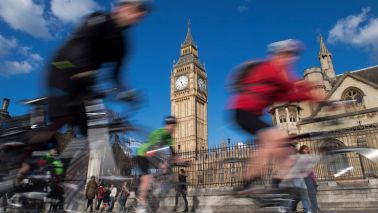Mogadishu
I return to Mogadishu to find it’s calm – only a few assassinations, hit-and-run attacks, IEDs or suicide bombs — and at last most Somalis seem ready for peace. I’ve covered events here for 21 years and love imagining an end to war in this delightful city. I also know that it’s during times of calm, when you drop your guard — forgetting that there’s one rule for Somalis and another for foreigners — you end up dead.
Mogadishu is a town I know so well I could find my way around it blindfolded. Sadly, since the early 1990s I haven’t been able to wander about on my own. High seas piracy is declining, but land-based gangs and Al-Shabaab insurgents still see Westerners like me as worth a few bob in ransom. I’m with John Conroy, a tough veteran maker of Ross Kemp films in Afghanistan, where the Taleban shot him. To keep the insurers happy, we have an escort vehicle carrying two PKM machine-gunners and four riflemen — and double that number when visiting wilder spots. We’re told to wear full flaks and helmets. We carry a trauma kit with the following always to hand: tourniquet, airway tube and Celox blood coagulant for ramming into stab, gunshot or blast injuries.
Positioned front and back of our vehicle are Go Pro cameras recording our progress — and if we’re hit by an explosion or ambushed or kidnapped, that goes on tape. A GPS beacon placed on the dashboard continuously signals our position. Finally we carry lozenge-sized beacons small enough to hold in the mouth like a piece of chewing gum or to swallow in case of kidnap. These emit VHF signals that can be tracked by rescuers. I adapted this system myself after talking at home in Kenya to zoologists using VHF trackers to research the behaviour of lion and elephant.








Comments
Join the debate for just £1 a month
Be part of the conversation with other Spectator readers by getting your first three months for £3.
UNLOCK ACCESS Just £1 a monthAlready a subscriber? Log in